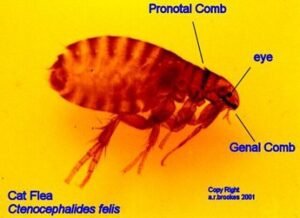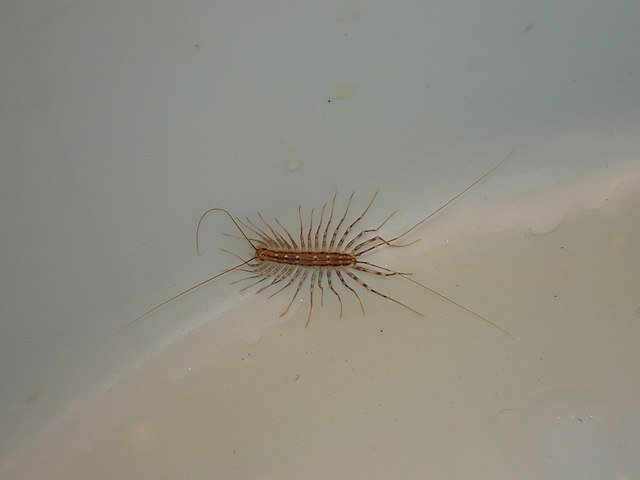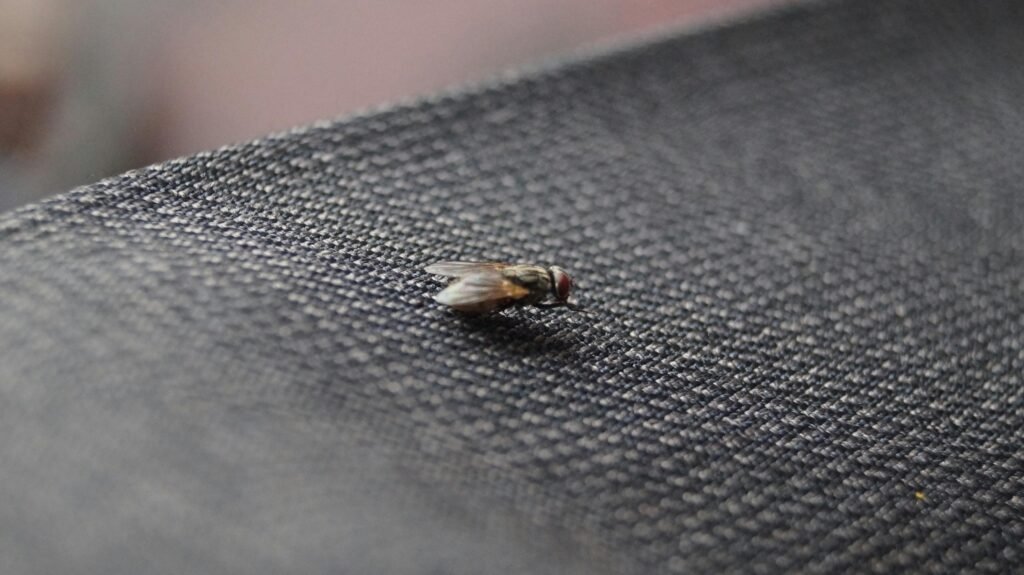Cat Fleas: Identification, Biology, Risks, and Control
 The cat flea (Ctenocephalides felis) is the most widespread flea species worldwide. Despite its name, it infests not only cats but also dogs, wild mammals, livestock, and even humans. Much like bed bugs (Cimex lectularius), which bite people while they sleep, cat fleas survive exclusively by feeding on blood. Their resilience, rapid reproduction, and ability to spread disease make them one of the most significant pests in both veterinary and public health.
The cat flea (Ctenocephalides felis) is the most widespread flea species worldwide. Despite its name, it infests not only cats but also dogs, wild mammals, livestock, and even humans. Much like bed bugs (Cimex lectularius), which bite people while they sleep, cat fleas survive exclusively by feeding on blood. Their resilience, rapid reproduction, and ability to spread disease make them one of the most significant pests in both veterinary and public health.
The cat flea’s success lies in its adaptability. It thrives indoors and outdoors, from apartments to barns, and can infest carpets, bedding, and furniture as easily as animal hosts. This article explores the biology, distribution, health risks, and modern strategies for controlling this persistent parasite.
Identification
Physical characteristics
Size: Adults measure 1–3 mm.
Color: Reddish-brown, laterally flattened body.
Wings: None; instead, powerful hind legs adapted for jumping.
Mouthparts: Piercing-sucking structures for extracting blood.
Special features: Presence of comb-like spines (genal and pronotal combs) on the head and thorax, distinguishing them from other flea species.
Behavior
Adults are visible moving through the fur of cats and dogs.
Fleas jump up to 18 cm vertically and 33 cm horizontally.
They avoid light, preferring shaded areas of fur or carpets.
Differentiation from other species
Dog flea (Ctenocephalides canis): Less common; slightly different head shape.
Human flea (Pulex irritans): Rare in modern households; lacks combs.
Oriental rat flea (Xenopsylla cheopis): Historical vector of plague; comb-less.
Biology and Ecology
Life cycle
The flea life cycle has four stages: egg, larva, pupa, and adult.
Eggs: White, oval, laid on host but fall into environment (carpets, bedding).
Larvae: Worm-like, feed on organic debris including adult flea feces (“flea dirt”).
Pupae: Cocoon stage; highly resistant to treatments.
Adults: Emerge when vibrations, heat, or carbon dioxide signal a host is nearby.
Under favorable conditions, development from egg to adult can take as little as 2–3 weeks. In unfavorable conditions, pupae can remain dormant for months.
Feeding habits
Adults feed exclusively on blood, often several times per day.
Larvae do not feed on blood but rely on organic debris.
A single female can consume up to 15 times her body weight in blood daily.
Reproduction
Females begin laying eggs within 24–48 hours of first feeding.
A single female may lay 20–50 eggs per day, producing hundreds in her lifetime.
Infestations can escalate rapidly without control.
Ecological role
Fleas are ectoparasites, dependent on warm-blooded hosts.
They form part of food chains, serving as prey for ants and ground beetles.
However, their primary ecological significance is as disease vectors.
Global Distribution
The cat flea is cosmopolitan in distribution.
North America & Europe: Most common flea in households with pets.
Asia & Africa: Infests domestic animals and livestock.
Australia & New Zealand: Widespread among cats, dogs, and wild marsupials.
South America: Major veterinary concern in urban and rural settings.
Climate influences population dynamics. Warm, humid conditions accelerate reproduction, while cold climates slow development but do not eliminate infestations in heated homes.
Risks and Damage
Health risks for pets
Flea allergy dermatitis (FAD): Hypersensitivity reaction to flea saliva; leads to itching, hair loss, and skin infections.
Anemia: Severe infestations in kittens or small animals may cause life-threatening blood loss.
Tapeworm transmission: Fleas are intermediate hosts of the tapeworm Dipylidium caninum.
Secondary infections: Scratching and biting wounds invite bacterial infections.
Human health risks
Flea bites cause red, itchy welts, often clustered on ankles and legs.
Allergic reactions vary from mild to severe.
Though less common today, fleas can transmit pathogens such as Rickettsia felis (flea-borne spotted fever).
Property and lifestyle impact
Infestations spread quickly through carpets, upholstery, and bedding.
Pupal stages resist many treatments, making eradication difficult.
Reinfestations frustrate pet owners, sometimes requiring months of control efforts.
Signs of Infestation
Scratching pets: Cats and dogs biting, licking, or scratching excessively.
Flea dirt: Black specks on pet fur or bedding, which turn red when moistened.
Visible adults: Tiny jumping insects on pets or furniture.
Bites on humans: Small red itchy spots, often in clusters.
Larvae or pupae: Rarely seen, but may appear in carpets or cracks.
Control Methods
On pets
Topical treatments: Spot-on solutions (fipronil, imidacloprid, selamectin).
Oral medications: Tablets that kill adult fleas or disrupt reproduction.
Collars: Long-lasting protection, often releasing insecticides or growth regulators.
Regular grooming: Flea combs physically remove adults and flea dirt.
In the home
Vacuuming: Removes eggs, larvae, and adults from carpets and furniture.
Hot washing: Bedding, blankets, and pet fabrics should be laundered in hot water.
Insect growth regulators (IGRs): Break life cycle by preventing larvae from maturing.
Environmental sprays: Target carpets, cracks, and upholstery.
Outdoors
Remove organic debris where larvae may develop.
Treat shaded, moist areas around kennels and patios.
Wildlife control may reduce flea reservoirs in suburban environments.
Advanced Approaches
Integrated flea management (IFM): Combines pet treatment, environmental control, and monitoring.
Biological control: Entomopathogenic fungi and nematodes show promise in experimental trials.
Vacuum-triggered emergence: Stimulating pupae to hatch before applying treatments can increase success rates.
New chemistries: Isoxazolines (e.g., fluralaner) offer long-lasting control.
Public awareness: Educating pet owners about the flea life cycle is critical for preventing reinfestations.
Cultural and Historical Context
Fleas have shaped human history.
Medieval Europe: The Oriental rat flea (Xenopsylla cheopis) was the primary vector of the bubonic plague, which killed millions.
Folklore: Fleas were often mentioned as symbols of persistence and annoyance in poetry and literature.
Flea circuses: In the 18th and 19th centuries, “performing” fleas were displayed as curiosities.
Modern context: Fleas remain among the most common household pests globally, especially in homes with pets.
FAQ Section
Q1: Do cat fleas live on humans?
No. They may bite humans but cannot establish long-term infestations.
Q2: Can fleas survive without pets?
Yes. Adults may survive several weeks without feeding, and pupae can remain dormant for months.
Q3: How long does it take to eliminate fleas?
Effective programs may take 2–3 months, due to resistant pupal stages.
Q4: Are natural remedies effective?
Essential oils and diatomaceous earth may reduce populations but rarely achieve full control.
Q5: What is the fastest way to kill fleas on cats?
Veterinary-approved topical or oral treatments provide the quickest relief.
Q6: Why do fleas come back after treatment?
Pupae in the environment hatch over time, creating waves of new adults.
Q7: Can fleas transmit diseases today?
Yes. While plague is rare, fleas can spread Rickettsia felis and serve as vectors for tapeworms.
Q8: Do fleas prefer cats over dogs?
Yes. Ctenocephalides felis favors cats but will readily infest dogs and other mammals.
Final Thoughts
The cat flea (Ctenocephalides felis) is more than a nuisance; it is a resilient parasite that threatens both pets and humans. Its ability to reproduce quickly, survive in diverse environments, and resist partial treatments makes it one of the most persistent household pests.
For pet owners, the solution lies in consistency: treating animals, the home, and the surrounding environment simultaneously. Quick fixes are rarely successful. Instead, integrated flea management—combining veterinary-approved medications, regular cleaning, and environmental treatments—offers the most effective long-term control.
Looking to the future, advances in oral medications, biological controls, and improved public awareness will help reduce flea populations without compromising pet safety. Until then, prevention and vigilance remain the keys to keeping households flea-free.
Disclaimer
This article is for informational purposes only. Pest control laws and approved chemicals vary by country. For best results and legal safety, we strongly recommend contacting a licensed pest control professional in your local area. Always make sure that the pest control technician is properly certified or licensed, depending on your country’s regulations. It’s important to confirm that they only use approved products and apply them exactly as instructed on the product label. In most places in Europe, UK, or USA, following label directions is not just best practice—it’s the law.
Author Bio
Nasos Iliopoulos
BSc Agronomist & Certified Pest Control Expert
Scientific Director – Advance Services (Athens, Greece)
Licensed Pest Control Business – Ministry of Rural Development & Food (GR)


